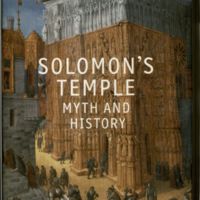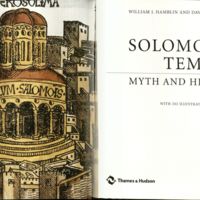Solomon's Temple: Myth and History
Dublin Core
Title
Solomon's Temple: Myth and History
Description
he only up-to-date illustrated account of one of the most intriguing and influential buildings in history. The Temple of Solomon has been the focus of profound spiritual reverence for over three thousand years. From its Bronze Age antecedents in the portable shrines of nomadic tribes, through countless permutations in Judaism, Christianity, and Islam, the idea of the Temple of Solomon--a place of communion between God and man--has proven endlessly alluring. The sacred building itself was destroyed more than once, on the last occasion by the Romans in AD 70, yet the great church of Hagia Sophia in Istanbul, the Dome of the Rock in Jerusalem, the headquarters of the Templars, and numerous medieval cathedrals were all conceived as symbolic re-creations of Solomon's original. Medieval magicians practiced magic to harness the demons who were believed to have constructed the Temple, and mystics of all faiths had visions of a celestial Temple, mirroring that on earth, where divine secrets would be revealed. "Solomon's Temple" draws on holy texts and mystic writings, works of art and architecture, modern reconstructions, and photographs to reveal the myriad ways in which the Temple and the sacred ground on which it stood have inspired mankind through the ages.
Creator
William Hamblin
Publisher
London ; New York, N.Y. : Thames & Hudson
Date
2007
Contributor
David Seely
Text Item Type Metadata
Original Format
Book
Citation
William Hamblin , “Solomon's Temple: Myth and History,” Humanities Hub, accessed December 28, 2025, https://humanitieshub.sdsu.edu/omeka/items/show/1548.


